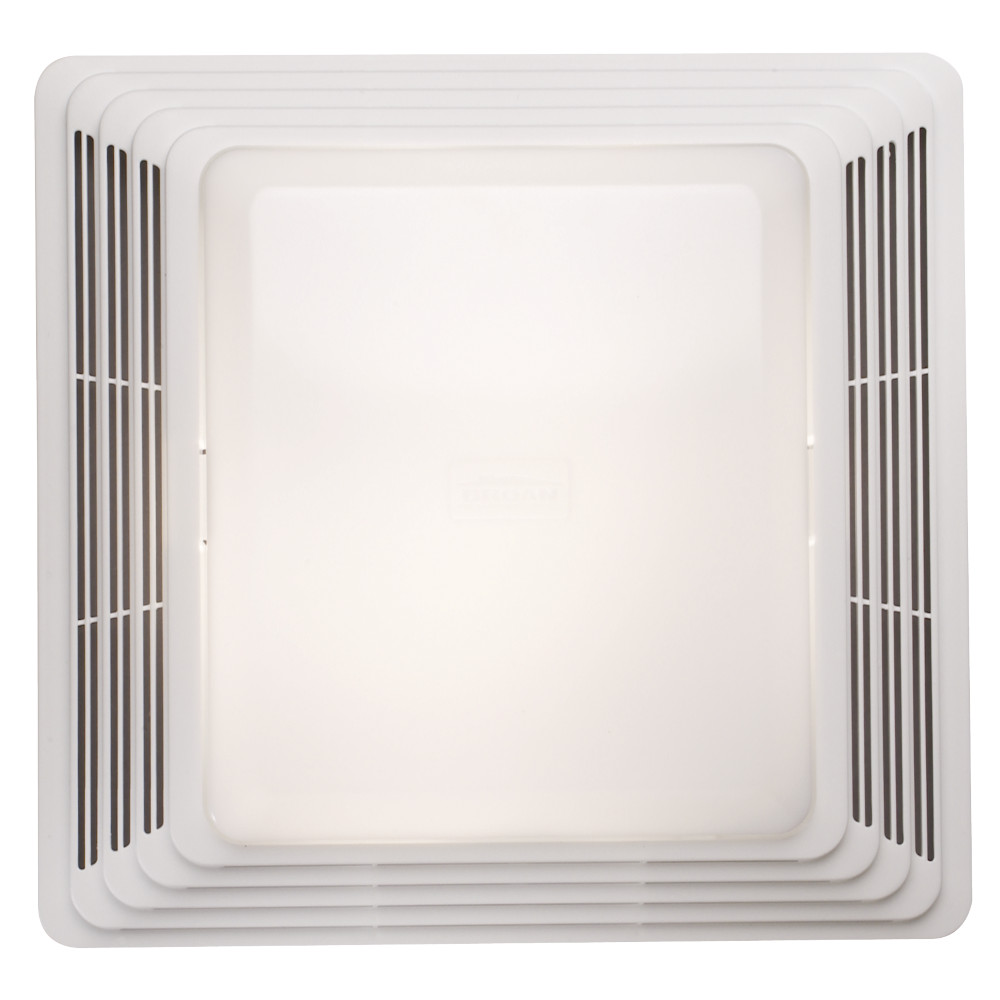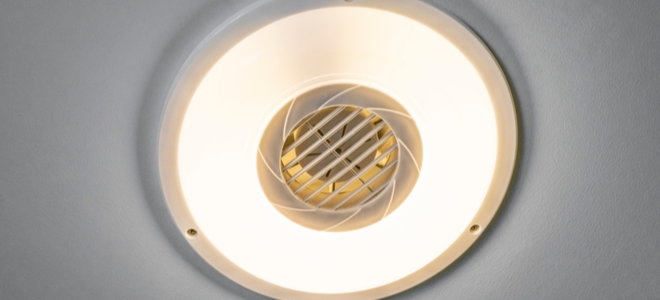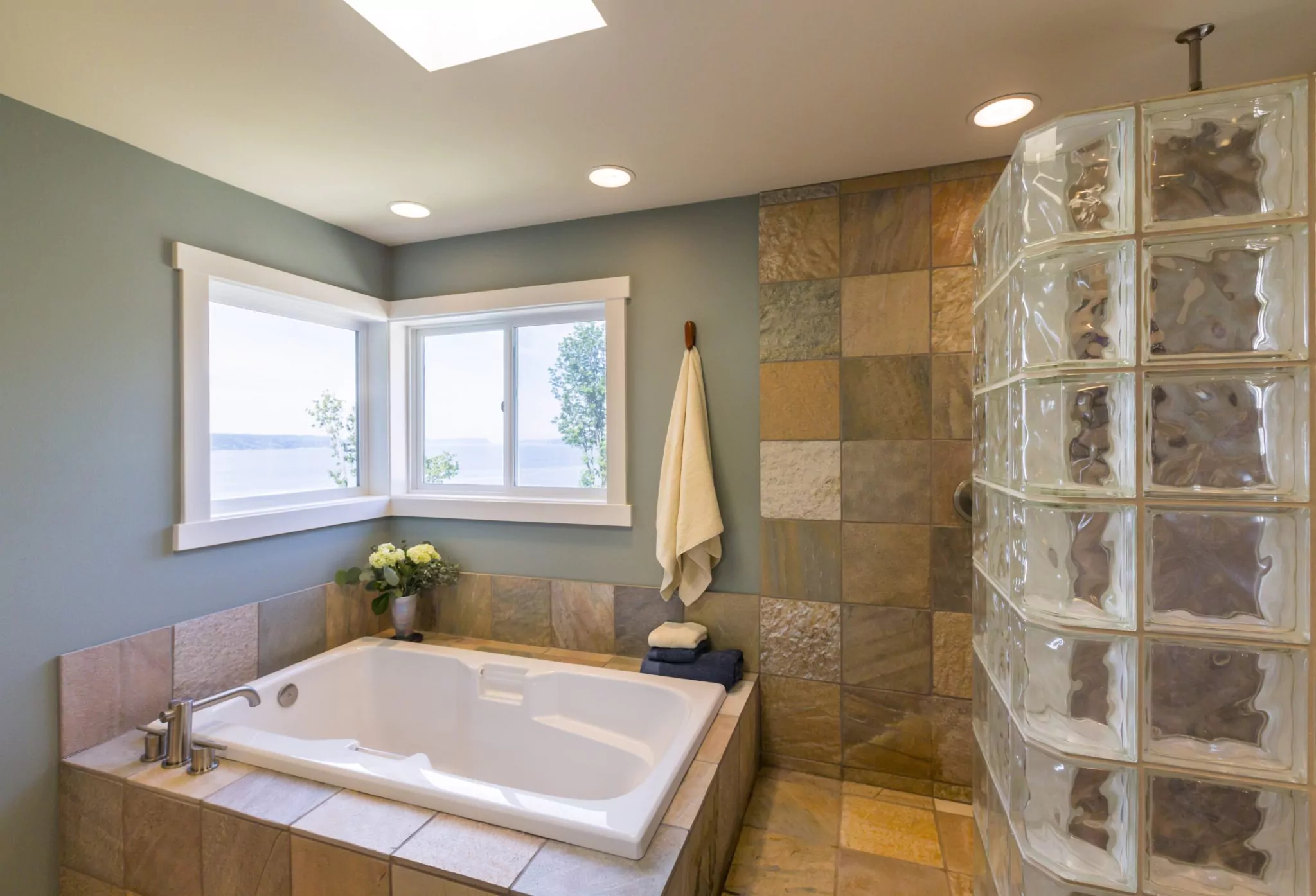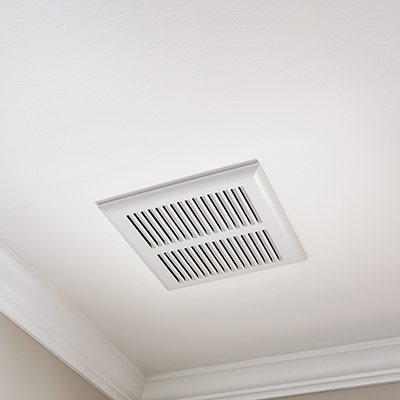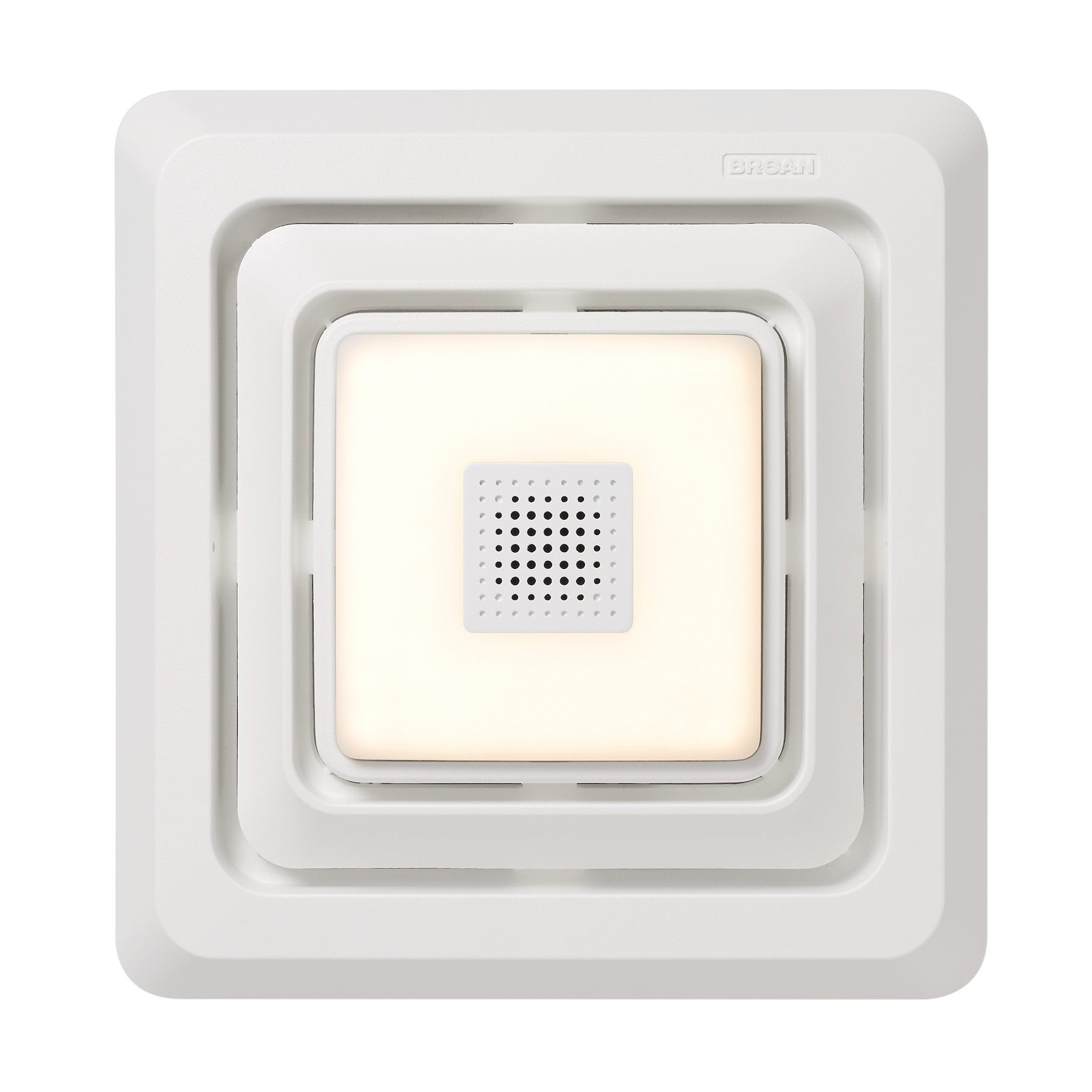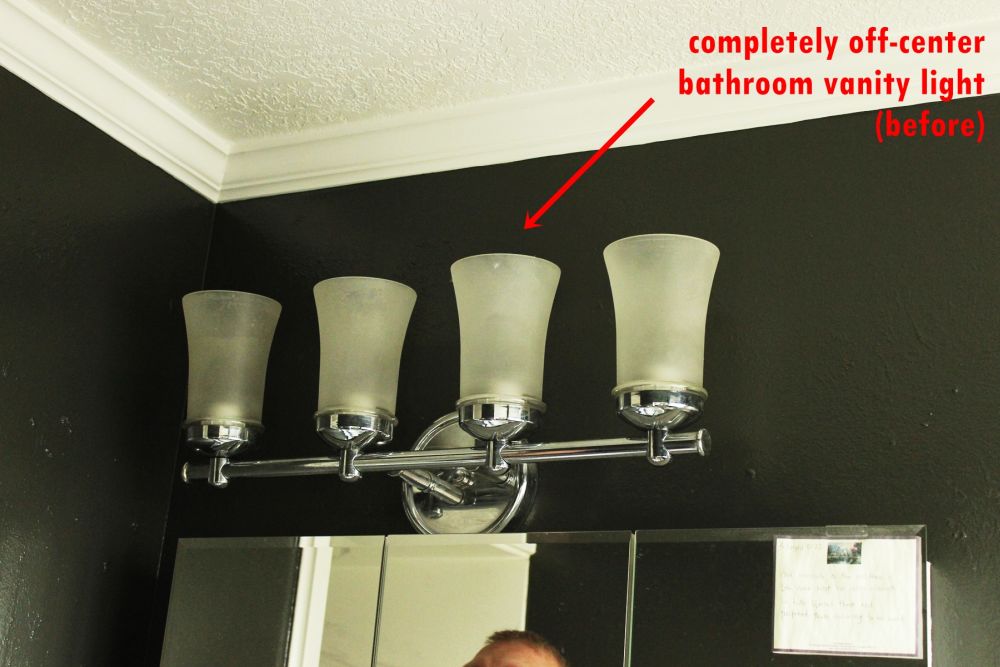The Importance of Bathroom Ventilation
Bathroom ventilation often goes overlooked, yet it plays a crucial role in maintaining a healthy and comfortable home environment. Proper ventilation helps to remove excess moisture, odors, and pollutants from the bathroom, preventing issues such as mold growth, deterioration of fixtures, and unpleasant smells. Understanding the importance of bathroom ventilation is essential for homeowners looking to create a more hygienic and enjoyable living space.
- Preventing Mold and Mildew: Adequate ventilation in the bathroom is essential for preventing the growth of mold and mildew. These fungi thrive in warm, humid environments, making the bathroom an ideal breeding ground. Without proper ventilation, moisture accumulates on surfaces such as walls, ceilings, and fixtures, providing the perfect conditions for mold growth. Over time, mold can cause structural damage and pose health risks to occupants, making it crucial to maintain good airflow and ventilation.
- Improving Air Quality: Poor ventilation can lead to a buildup of indoor air pollutants in the bathroom, including volatile organic compounds (VOCs) from cleaning products, aerosol sprays, and personal care items. These pollutants can contribute to poor indoor air quality, leading to respiratory issues, allergies, and other health concerns. By effectively ventilating the bathroom, homeowners can remove these pollutants and promote healthier indoor air for themselves and their families.
- Extending the Lifespan of Fixtures: Excess moisture in the bathroom can cause damage to fixtures such as paint, wallpaper, drywall, and wooden cabinets. Over time, this moisture exposure can lead to peeling paint, warping wood, and other forms of deterioration. Proper ventilation helps to reduce humidity levels in the bathroom, protecting fixtures from moisture-related damage and extending their lifespan. This not only preserves the aesthetic appeal of the bathroom but also saves homeowners money on costly repairs and replacements.
- Eliminating Odors: Unpleasant odors are a common issue in bathrooms, especially in households with multiple occupants. These odors can originate from various sources, including human waste, mildew, and stagnant water in drains. While air fresheners and candles provide temporary relief, proper ventilation offers a more effective solution by removing odors at the source. By exchanging stale air with fresh outdoor air, bathroom exhaust fans help to keep the space smelling clean and inviting.
- Enhancing Comfort: In addition to addressing health and maintenance concerns, proper bathroom ventilation also enhances overall comfort for occupants. A well-ventilated bathroom feels fresher and more inviting, providing a more pleasant experience for users. By maintaining optimal humidity levels and air quality, homeowners can create a comfortable environment where they can relax and unwind after a long day.

Choosing the Right Bathroom Exhaust Fan
Selecting the right bathroom exhaust fan is crucial for ensuring effective ventilation and maintaining a healthy indoor environment. With various options available on the market, including different sizes, styles, and features, homeowners may feel overwhelmed when trying to choose the best fan for their needs. By considering factors such as airflow capacity, noise level, energy efficiency, and additional features, individuals can make informed decisions and select a fan that meets their specific requirements.
Determine Air Flow Requirements: The first step in choosing a bathroom exhaust fan is to determine the airflow requirements for the space. This is typically measured in cubic feet per minute (CFM), representing the volume of air that the fan can move in one minute. To calculate the appropriate CFM rating for your bathroom, multiply the room’s square footage by the height of the ceiling and then divide by 7. This formula accounts for the recommended air exchange rate of 8 times per hour in a typical bathroom.
Consider Noise Level: Noise level is an important consideration when selecting a bathroom exhaust fan, especially for homeowners who value quiet in their living spaces. Fans with higher CFM ratings tend to produce more noise, although advancements in fan design have led to quieter operation in many models. Look for fans with low sones ratings, which indicate quieter performance. Additionally, consider installing a fan with variable speed settings to adjust the noise level based on your preferences.
Prioritize Energy Efficiency: Energy efficiency is another factor to consider when choosing a bathroom exhaust fan, as it can impact long-term operating costs and environmental sustainability. Look for fans that are ENERGY STAR certified, as they meet strict efficiency guidelines set by the U.S. Environmental Protection Agency (EPA). These fans use less energy than standard models, helping homeowners save money on utility bills while reducing their carbon footprint. Additionally, consider features such as automatic shut-off timers or motion sensors to minimize unnecessary energy consumption.
Explore Additional Features: When selecting a bathroom exhaust fan, explore additional features that may enhance functionality and convenience. For example, some fans come with built-in lighting options, allowing them to serve dual purposes as both a ventilation system and a source of illumination. Other features to consider include humidity sensors, which automatically activate the fan when moisture levels rise, and heater elements, which provide warmth during colder months. Choose a fan with features that align with your preferences and lifestyle.
Assess Installation Requirements: Finally, consider the installation requirements for the chosen bathroom exhaust fan, ensuring compatibility with your existing electrical wiring and ventilation ductwork. If you’re replacing an existing fan, take note of the dimensions and mounting configuration to ensure a seamless installation process. If you’re installing a fan in a new location or upgrading from a basic model, consult a professional electrician or HVAC technician for assistance with wiring and ductwork modifications.
Step-by-Step Guide: How to Replace a Bathroom Light with an Exhaust Fan
Replacing a bathroom light fixture with an exhaust fan is a practical upgrade that can improve ventilation and lighting in the space. While this project may seem daunting to some homeowners, it’s entirely achievable with the right tools, materials, and know-how. This step-by-step guide will walk you through the process of replacing your bathroom light with an exhaust fan, ensuring a successful installation that enhances the functionality and aesthetics of your bathroom.
Gather Materials and Tools: Before getting started, gather all the necessary materials and tools for the installation. You’ll need an exhaust fan with a built-in light fixture, electrical wiring, wire connectors, mounting brackets or hardware, ductwork and duct tape, a screwdriver, a utility knife, wire strippers, and a ladder. Make sure to choose an exhaust fan that fits the dimensions of your existing light fixture and meets your ventilation needs.
Turn Off Power: Safety should always be a priority when working with electrical wiring. Start by turning off the power to the bathroom at the circuit breaker or fuse box. Use a voltage tester to double-check that the power is off before proceeding with the installation. Once confirmed, remove the existing light fixture by unscrewing the mounting screws and disconnecting the wiring.
Prepare Installation Area: With the power off and the old light fixture removed, prepare the installation area for the new exhaust fan. Clean the mounting surface and remove any debris or obstructions. If necessary, install mounting brackets or hardware to support the weight of the fan. Additionally, check the existing ductwork for any damage or obstructions, and make any necessary repairs or adjustments.
Install Exhaust Fan: Follow the manufacturer’s instructions to install the exhaust fan in the designated location. Secure the fan to the mounting surface using the provided hardware, ensuring a stable and level installation. Connect the electrical wiring according to the wiring diagram included with the fan, using wire connectors to join the wires securely. If the fan has a built-in light fixture, connect the wiring for the light as well.
Connect Ductwork: Once the fan is securely mounted, connect the ductwork to the exhaust port using duct tape or metal clamps. Position the ductwork to vent air outside the home, ideally through a roof vent or exterior wall vent for optimal ventilation. Ensure that the ductwork is properly sealed to prevent air leaks and maximize the efficiency of the exhaust fan.
Test and Adjust: After completing the installation, restore power to the bathroom and test the operation of the exhaust fan and light fixture. Make any necessary adjustments to the fan settings or positioning to ensure optimal airflow and lighting in the space. Additionally, check for any signs of air leaks or other issues with the ductwork, and address them as needed to achieve reliable performance.
Tips for Ensuring Proper Installation and Functionality
While replacing a bathroom light with an exhaust fan can improve ventilation and lighting in the space, ensuring proper installation and functionality is essential for optimal performance. From selecting the right location for the fan to maintaining proper airflow and ventilation, there are several tips to keep in mind to ensure a successful installation and reliable operation over time. By following these tips, homeowners can maximize the effectiveness of their bathroom exhaust fan and enjoy a healthier, more comfortable living environment.
Choose the Right Location: Selecting the right location for the exhaust fan is crucial for effective ventilation in the bathroom. Place the fan as close to the source of moisture and odors as possible, typically above the shower or bathtub. This helps to capture steam and odors before they spread throughout the room, improving overall air quality. Additionally, ensure that there is sufficient space for the fan to vent air outside the home without obstruction.
Size Matters: When choosing an exhaust fan for your bathroom, consider the size of the space and the fan’s airflow capacity. Select a fan with a CFM rating that matches the size of the bathroom to ensure adequate ventilation. A fan that is too small may not effectively remove moisture and odors, while a fan that is too large may create excessive noise and energy consumption. Refer to industry guidelines or consult with a professional to determine the appropriate fan size for your bathroom.
Maintain Proper Airflow: Proper airflow is essential for maximizing the effectiveness of the exhaust fan and preventing issues such as condensation and mold growth. Ensure that the exhaust fan is not obstructed by furniture, curtains, or other objects that could impede airflow. Additionally, keep bathroom doors open during and after showering to allow for proper ventilation throughout the space. Consider installing louvered vents in exterior walls or windows to facilitate air exchange and improve ventilation.
Clean and Maintain Regularly: To maintain optimal performance and functionality, it’s important to clean and maintain your bathroom exhaust fan regularly. Remove dust and debris from the fan blades and housing using a vacuum cleaner or soft brush attachment. Check the ductwork for any obstructions or buildup of lint and debris, and clean or replace the ductwork as needed to ensure unrestricted airflow. Additionally, replace the fan’s filter or grille periodically to prevent clogs and maintain efficient operation.
Address Moisture Issues: In addition to installing an exhaust fan, take steps to address moisture issues in the bathroom to prevent mold and mildew growth. Use moisture-resistant paint and caulking in areas prone to water exposure, such as around sinks, showers, and tubs. Install a waterproof membrane or sealant in the shower enclosure to prevent water infiltration into the walls and floors. Consider using a dehumidifier in the bathroom to remove excess moisture from the air and maintain optimal humidity levels.
Maximizing Efficiency and Aesthetics
In addition to functionality, maximizing efficiency and aesthetics is important when upgrading bathroom ventilation systems. Today’s market offers a range of options that not only improve air quality but also enhance the overall look and feel of the bathroom. From energy-efficient features to stylish designs, considering these additional factors can help homeowners achieve the ideal balance of functionality and aesthetics in their bathroom ventilation upgrades.
Energy-Efficient Features: When selecting a bathroom exhaust fan, look for models that offer energy-efficient features to minimize electricity consumption and reduce utility costs. ENERGY STAR-certified fans meet strict efficiency guidelines set by the U.S. Environmental Protection Agency (EPA), ensuring optimal energy performance. Additionally, consider fans with features such as low-power consumption motors, automatic shut-off timers, and motion sensors, which help to minimize energy waste and promote sustainable living.
Integrated Lighting Options: Many modern exhaust fans come with integrated lighting options, allowing them to serve dual purposes as both ventilation systems and light fixtures. This eliminates the need for separate lighting installations in the bathroom, saving space and simplifying the overall design. Choose fans with adjustable lighting settings to customize brightness levels according to your preferences and create the desired ambiance in the space.
Stylish Designs: Bathroom exhaust fans are no longer limited to utilitarian designs; they now come in a variety of styles and finishes to complement different bathroom aesthetics. Whether your bathroom has a traditional, contemporary, or minimalist design, there’s a fan available to suit your decor preferences. Look for fans with sleek, modern designs, decorative grille covers, and customizable trim options to enhance the visual appeal of your bathroom while providing efficient ventilation.
Quiet Operation: The noise level is a common concern for homeowners when it comes to bathroom exhaust fans. Fortunately, many manufacturers now offer fans with advanced sound-dampening technologies and quiet operation features. Look for fans with low sones ratings, which indicate quieter performance, especially important for bathrooms located near bedrooms or living areas. Additionally, consider installing fans with variable speed settings to adjust the fan’s noise level based on your preferences and usage patterns.
Smart Home Integration: For homeowners seeking the latest in technology and convenience, consider investing in a smart bathroom exhaust fan that integrates with your home automation system. These smart fans can be controlled remotely via smartphone apps or voice commands, allowing you to adjust fan settings and monitor air quality from anywhere in the home. Some models even offer advanced features such as humidity sensing and automatic activation, ensuring optimal ventilation without the need for manual intervention.
How To Replace Bathroom Fan Light Combo – KNOW IT INFO
How to Replace a Bathroom Fan Light
Remodelaholic Update an Existing Bathroom Exhaust Fan Cover
My bathroom exhaust fan didn’t work
How to Replace a Bathroom Vent Fan and Light Video » The Money Pit
How To Update And Replace A Bathroom Exhaust Fan Cover To Add
How to Install a Bathroom Fan
How to remove the cover of my bathroom fan so I can
FG800SPKS Broan® Bluetooth® Speaker Quick Install Bathroom
Related Posts:
- Bathroom Lighting Collections
- Vintage Industrial Bathroom Lighting
- Bathroom Lighting Ideas Pictures
- Blue Led Bathroom Lights
- Bathroom Lighting London
- Wiring Bathroom Light And Fan
- Bathroom Light Fixtures Wall Sconce
- Bathroom Light Fixtures For Double Vanity
- Bathroom Light Pull Fitting
- Bathroom Lighting LP65 Rated


